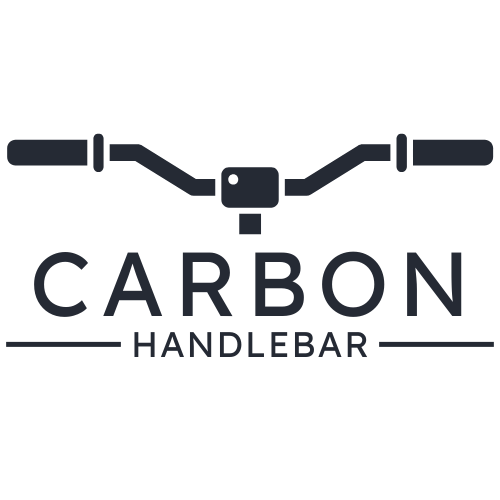Selecting the right carbon handlebars can significantly enhance your cycling experience, whether you’re a road cyclist, mountain biker, or casual commuter. With countless options on the market, navigating this decision can seem daunting, especially for beginners. This buyer’s guide will outline the key factors to consider when choosing carbon handlebars tailored to your riding style and preferences.
Purpose and Riding Style
The very first step in selecting handlebars is understanding the purpose of your bike and your riding style. Are you gearing up for competitive races or leisurely weekend rides? Perhaps you’re looking for something versatile for commuting or touring. Each category has specific requirements:
- Road Cycling: Lightweight and aerodynamic handlebars are essential for racing. A longer reach and shallow drop can offer an aggressive riding position.
- Mountain Biking: Handlebars should provide control and stability. Opt for wider options with a slight rise to maintain comfort during descents.
- Touring: A more upright position can enhance comfort on long rides, so consider ergonomic designs that reduce strain on your back and arms.
Width
Handlebar width plays a crucial role in control and aerodynamics. A simple rule of thumb is to choose a width that matches your shoulder span. Wider handlebars allow for better leverage and stability, especially when navigating technical trails, while narrower handlebars can enhance aerodynamics for road cycling. Testing different widths can help you find the perfect fit.
Drop and Reach
Understanding drop and reach measurements is essential for comfort and handling.
- Drop: This refers to the vertical distance from the top to the bottom of the handlebars. A shallower drop might be more comfortable for longer rides, whereas deeper drops can lower your center of gravity for racing.
- Reach: This is the horizontal distance from the stem to the farthest point of the drops. Longer reaches are typically suited for competitive riders, while a shorter reach may provide easier access to the brakes and shifters.
Don’t hesitate to test various drop and reach measurements to determine the combination that feels most comfortable for your riding style.
Weight
In the world of cycling, weight is a major consideration. Lightweight handlebars can provide better responsiveness and speed but should not sacrifice strength and durability. Compare the weights of different models to find the ideal balance between lightweight construction and the robustness required for your riding needs.
Shape and Design
When choosing handlebars, the shape can be as important as the specs. Options range from flared designs that promote comfort to traditional shapes that offer stability. Consider if a compact or shallow drop suits you better, as these shapes can improve comfort for longer rides. The feel of the handlebars can largely affect your cycling experience, so choose a shape that aligns with your personal style and comfort preferences.
Clamp Diameter
Compatibility with your bike’s stem is crucial. Most handlebars feature common clamp sizes, such as 31.8mm and 25.4mm. It’s essential to check these specifications to ensure a secure fit when mounting the handlebars. An ill-fitting handlebar can compromise both your safety and performance.
Material Quality
Look for high-quality carbon fiber construction that offers an optimal strength-to-weight ratio. Avoid cheaper alternatives or mixed materials that may compromise performance. A well-constructed carbon handlebar not only improves ride quality but can also enhance the lifespan of your bike components.
Ergonomics
Comfort should be a priority, particularly for long rides. Ergonomically designed handlebars reduce strain on your hands and wrists, making your cycling sessions more enjoyable. Features like winged tops or textured surfaces improve grip and control, allowing for a more relaxed hand position over extended distances.
Brand Reputation
Researching reputable brands is crucial in ensuring you invest in quality carbon products. Read reviews and ask seasoned cyclists for recommendations. Brands with a proven track record in producing reliable bike components often provide the support and durability needed for a successful riding experience.
Budget
With a vast array of options available, it’s important to set a realistic budget that encompasses both quality and cost. While it may be tempting to opt for cheaper options, be wary of products that seem too good to be true as they often compromise on quality. Explore models within your price range to strike the right balance between affordability and performance.
Warranty and Customer Service
Before making a purchase, it’s wise to check the warranty offers provided by the manufacturer. A reliable warranty can protect your investment against defects. Additionally, ensure that the brand has dependable customer service to assist with any issues or queries post-purchase.
Test Ride
If possible, test ride a bike equipped with the handlebars you’re considering or find a way to simulate their feel. Pay attention to comfort and handling, as these factors will ultimately influence your riding experience.
Choosing the right carbon handlebars might seem overwhelming at first, but by considering these factors, beginners can confidently navigate their options. Take the time to understand your riding style and preferences, and don’t hesitate to test different options. Ultimately, the right set of handlebars can enhance your cycling experience, making each ride a pleasure rather than a chore.
